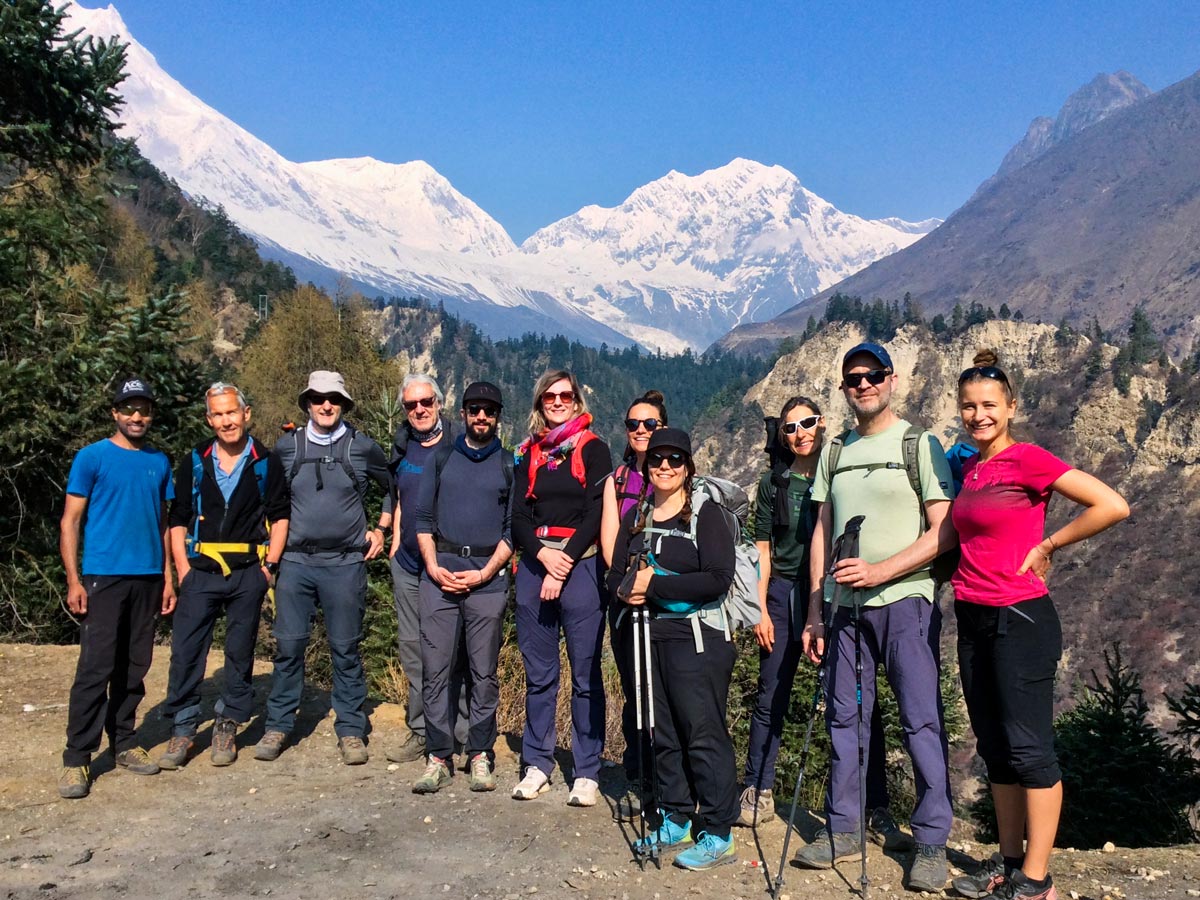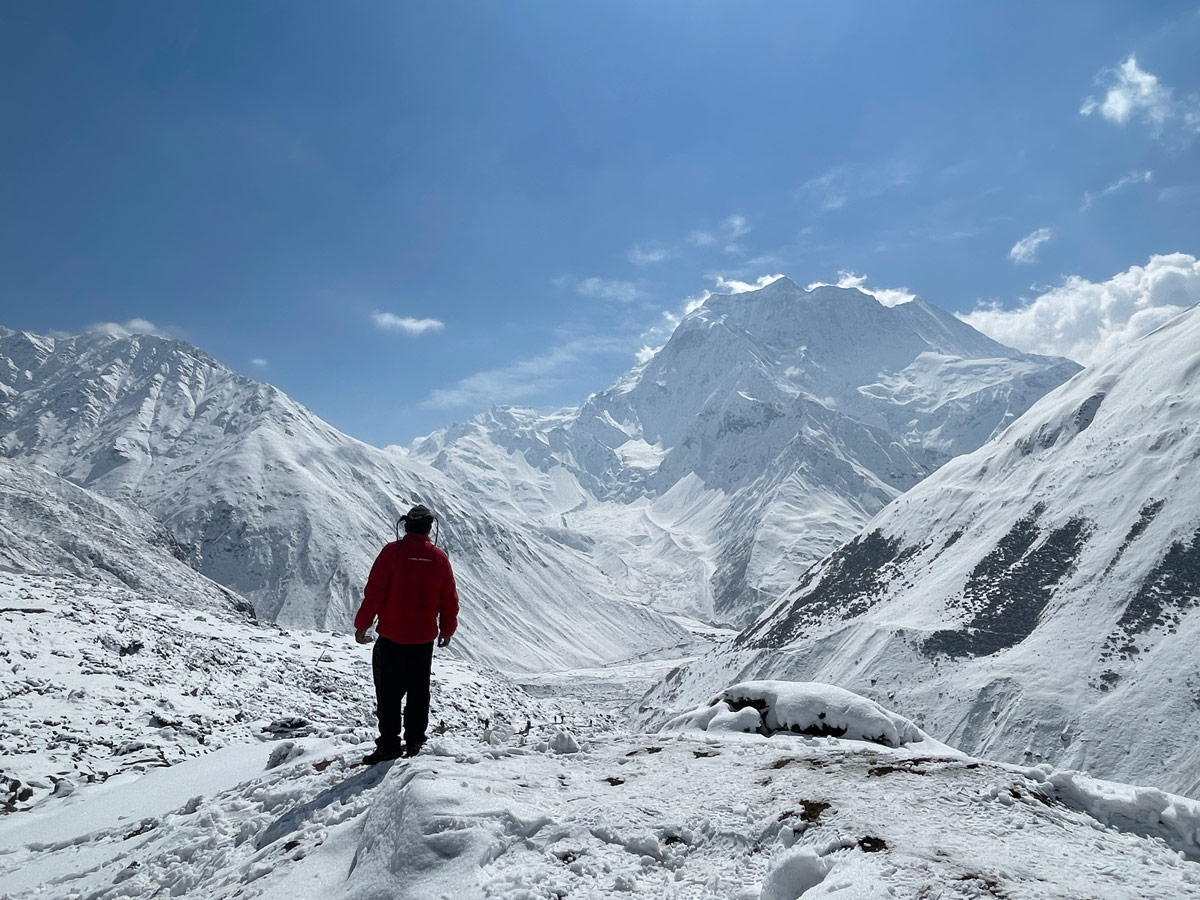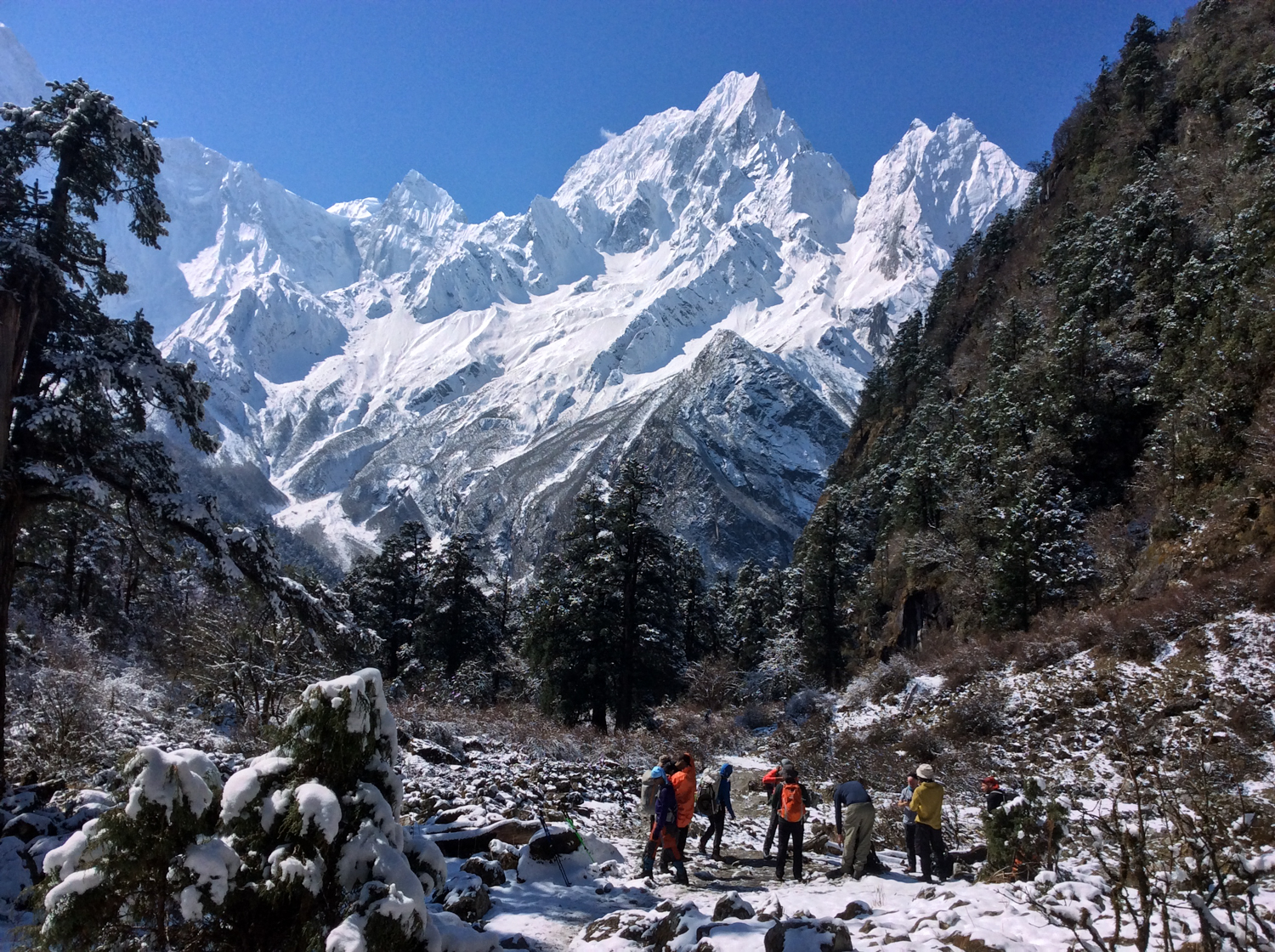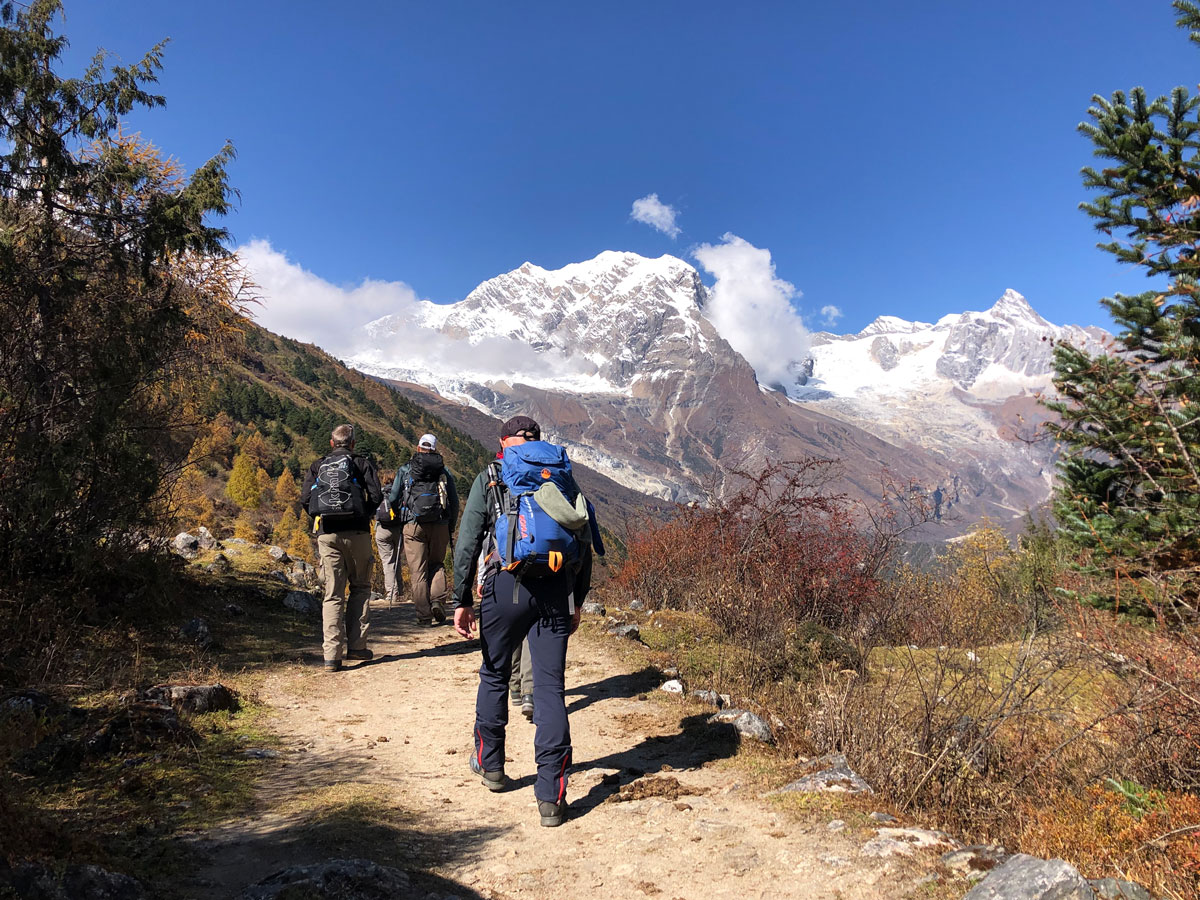The remote and stunning Manaslu Circuit trek is an experience unlike any other as it takes you for the exploration of the untouched areas in the heart of the Himalayas. Thanks to its diverse landscapes, rough terrains, and breathtaking ecosystem, the trek is the journey of a lifetime.
However, the Manaslu trek also presents you with uncountable challenges, conquering which requires thorough preparation. Through this blog, we shed light on the most crucial aspect of preparation for the Manaslu Circuit trek, i.e. packing.
Packing the limited yet right gear for your trek is not only important to enhance your comfort during the trek, but it also ensures your safety in the unpredictable midst of Himalayas.
Keeping in mind that even after proper planning certain important details can slip your mind, in this blog we cover all the gear and equipment that should make space in your packing for Manaslu Circuit trek.
Regardless of whether you have done meticulous research and planning for the trek, or made a spontaneous plan, this blog comes in handy to anyone planning to embark on the challenging yet adventurous Manaslu Circuit trek.
However, be mindful that the packing list is bound to vary according to the season that you are opting for to go on the trek. Some of the items might also change depending on your personal preference.
So, feel free to make some alterations to this comprehensive overview of the packing list to ensure that you are equipped with the right gear during the right season.
Understanding the Trek’s Requirements
Harboring the mosaic of habitats, the Manaslu Circuit trek is an unpredictable odyssey full of contrasts featuring everything from warm sub-tropical forests at the starting point and harsh, cold, and alpine conditions as you ascend.
Characterized by the variety of spectacular landscapes and rugged terrain, each of the different bio-climatic zones brings its own challenges throughout the trek. You will be traversing through a wide range of altitudes starting from 900 m to 5,160 m, and each elevation presents a unique set of demands.
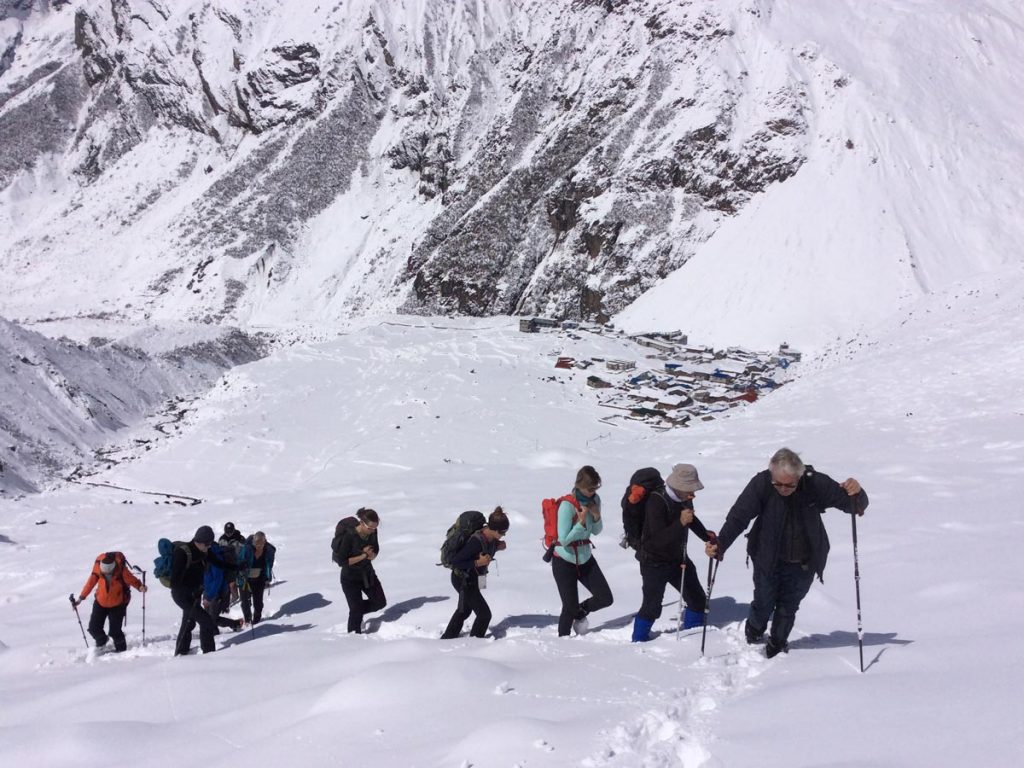
Spanning over a couple of weeks, the trek takes you through diverse terrains with lack of any and every familiar comforts. Throughout this, one must be prepared with enough supplies that can sustain you through the prolonged exposure to the extreme conditions of the remote trail.
Given the conditions, your gear must be versatile, durable, and suitable for all the trekking conditions ranging from passes blanketed in snow to dense forests and rocky trails. Each of these requirements can be quite overwhelming and you might end up over packing.
Therefore, we have compiled a list of things that you can pack to perfectly tackle the challenges of the trek while not being burdened by the overpacked backpack.
General
Sleeping Gear
The most important thing to have during the trek is climate appropriate sleeping gear to ensure that your body is well rested and energized.
While traversing through the variety of altitudes, you will be facing several chilly Himalayan nights. Although you will be provided with warm blankets and bedding arrangements during your stay at the teahouses, it is advisable to sleep in your own sleeping gear to ensure proper hygiene.
Therefore, it is highly recommended that you carry your own sleeping gear during the trek. Bring along a four season (zero degree) sleeping bag along with a silk or fleece liner to tackle heavy snowfalls and freezing temperatures at higher elevations.
You can purchase sleeping gear of your choice from the tourist hub of Kathmandu, Thamel, where you will be presented with a wide range of options. If you are short on time, you can easily purchase trekking essentials during the trek up to Samagaon.
Besides this, if you are trekking with Ace the Himalaya, you have the option to rent a sleeping bag for an additional fee.
Puffy Down Jacket
Trapping warm air to retain heat along with being lightweight and compressible, a puffy down jacket is a must have in your packing list. They help you tackle the challenging temperatures at higher elevations while not burdening your backpack.
If you are someone who lives in warm climatic conditions and has no use of the jacket after he trek, it is best that you rent the jacket from your travel agency as many of them provide that option.
However, if you want to go for a purchase, it is recommended that you opt for a puffy down jacket from a reliable company like Montbell, Mountain Hardwear, or a dependable replacement.
Backpack and Daypack
Make sure to carry a spacious and comfortable backpack that is efficiently packed while keeping it lightweight yet fitting all the gear. If you are unaware of how to put a backpack together, you can always watch tutorials on YouTube.
Also carry along a 35–45-liter daypack to carry all your essentials like cash, documents, water bottle, camera, etc. You must have a rain cover for your daypack during all the seasons, especially monsoon.
While trekking with Ace the Himalaya, you will get a free 80-liter duffel bag during the pre-trip meeting which can be used to store the items you won’t be needing for the day and will be carried by the porter.
Essential Clothing
Packing the right clothing is important to ensure comfort during the trek as it allows you to add or remove layers depending on the climate. From base layers to outer layers, our comprehensive list includes all the clothing items you might need to conquer the variable conditions of the trail.
Upper Body
Sun hat or Cap
As you will be trekking during daytime, you will be exposed to direct sunlight for long hours. Therefore, carry a sun hat or a cap to protect yourself from sunburn and to reduce the chances of heat strokes.
Wearing a cap also shields your eyes from the glare, giving you a clear view. If you are trekking with Ace the Himalaya, you will be given a free baseball cap during the pre-trip meeting.
Knitted hat
To tackle the cold mornings and chilly evenings, carry a knitted hat or a beanie. It helps to prevent heat loss and provides additional warmth at higher elevations.
Scarf or Neck Gaiter
Adding an extra layer of warmth and protectiveness to your clothing, a neck gaiter or scarf keeps your body warm during the chilly aspects of the trek while also protecting you from sunburn.
Torso
Technical Fabric Base Layer
Investing in good base layers suitable for the trek is very important as these layers sit in direct contact with your skin. Therefore, you must be wary of what you are packing.
Opt for technical fabric base layers like synthetic or wool merino fabrics as they provide many perks. These materials are breathable and wick away the moisture from your body while resisting odor and regulating your body temperature.
Providing insulation to your body, these layers keep you away from illnesses amidst the mountains. Make sure to carry short and long-sleeved shirts made up of these fabrics for the trek.
Waterproof and Windproof Shell
A hardshell jacket specifically meant for trekking purposes might be a life saver during the trek as it shields you from rain, snow, as well as strong winds in the mountains.
These jackets are windproof and waterproof and help maintain your body temperature during adverse climatic conditions like rainfall or snowfalls.
Fleece Jacket or Pullover
An additional fleece jacket or a pullover is recommended as it helps in layering to tackle the additional cold at higher elevations. Although the base layers help keep your body warm, a fleece jacket helps to lock in all that warmth with its insulating layer.
These air trapping jackets can also be worn as mid layer depending on the climate.
Lower Body
Hiking Pants
Like the torso, you must have your technical fabric base layer packed for your lower body as well. Once that is in place, be mindful of packing hiking pants.
To fit the occasion, your pants must be breathable, stretchable, and quick drying so that it ensures your comfort during the long hours of walking.
Comfortable Pants
Pack in pants that are comfortable so that you can freely relax and rejuvenate in the teahouses while not being affected by adverse climatic conditions.
Waterproof and Windproof Shell Pants
Similar to that of the windproof shell for the torso, pack outer shell pants as they protect you from the weather challenges like rain, strong wind, snowfall, as well as other inconveniences like scratches and insect bites.
Hiking Shorts
Walking for long hours in hiking pants might get uncomfortable and cause issues like heat stroke in warmer climatic conditions or even in higher elevation due to apricity.
For such conditions, pack in hiking shorts that allow regulation of air and prevent your body from overheating. Go for lightweight and quick drying fabric as it can be used during wet environments or crossing streams and rivers during the extremely remote trek.
Undergarments
You know what works best for you when it comes to undergarments. Therefore, pack ones that keep you comfortable throughout the trek.
Make sure to pack enough numbers if not extra as you won’t find any shops along the trail to buy new ones. Consider these few things while packing your undergarments:
- Opt for technical fabric and quick drying underwear as you will get opportunities to launder during the trip
- Sports bras are best for women for the long walking hours
- Carry comfortable sleeping clothes and pajamas
- Carry an extra bag to store the used undergarments until you have access to laundry
Footwear
Woolen Socks
For a pain-free and comfortable trekking experience, it is important that you protect your feet from the cold temperature. Therefore, invest in good woolen or technical fabric base socks to wick the moisture of your feet and provide insulation.
Hiking Socks
During long hours of walking along the trail, you must have good hiking socks that prevent blisters from your feet while giving you cushioning and extra support.
Liner Socks
Liner socks are optional to wear under your hiking socks to provide an additional layer of insulation and warmth. Made up of materials like silk, these socks also reduce friction and prevent blisters.
Trekking/Hiking Boots
It is important that you carry along durable and comfortable boots for the trek as it is a strenuous challenge involving long hours of walking every day. You will come across steep ascents and descents, to tackle which you need good boots with a proper grip.
Make sure that you break your boots in well prior to the trek to prevent blisters, hot patches, and foot pain.
Ice Cleats
Given the conditions of the trek, you might encounter snow covered trails, especially in the months of November to March. Walking on the steep trail might be a challenge with normal trekking boots.
Therefore, it is advisable to carry along ice cleats or micro spikes to prevent slipping on icy and wet parts of the trail.
Casual Shoes
You should carry comfortable and lightweight casual shoes that can be worn during your resting period at the teahouses or as you explore the villages along the trekking route.
Gaiter
Acting as a protective layer, gaiters cover your trekking boots and your lower legs. They close the gap between your pants and your boots, if any.
The sole purpose of packing a gaiter is to protect from dust, debris, and water from getting inside the shoes and causing discomfort. They also help tackle snow and dense undergrowth throughout the challenging trail.
Hands
Liner Gloves
To protect your hands from frost nips or frost bites during extreme temperatures, it is important that you carry liner gloves. You can carry woolen gloves or gloves made from technical fabric.
These provide an added layer of insulation to your hands ensuring that they are comfortable while trekking outdoors.
Hard-shell Outer Gloves
You can carry hard shell gloves to layer it above the liner gloves. Doing so provides additional protection and warmth to your hands as they are waterproof.
Health and Hygiene
First Aid Kit
Carry your health essentials in a well-stocked first aid kit that can tend to your medical needs in case of adversity. Make sure to include basic things in the kit like:
- A broad-spectrum antibiotic
- Cough syrup
- Painkillers
- Bismuth subsalicylate for indigestion or diarrhea
- 125 mg or 250 mg Acetazolamide tablets for altitude sickness (Consult your doctor)
- Band aids, gauze, tape, blister plaster
- Antibiotic ointment
- Crepe bandages
- Prescribed medications, if any
Sunscreen
As mentioned earlier, this trek is a strenuous journey with long hours of walking at higher elevations where you will be comparatively closer to the sun.
Therefore, to prevent sunburn and other harmful effects of the UV rays, you must carry sunscreen. You can carry one that suits your skin type and is from a trusted brand. You can also opt for a broad-spectrum sunscreen to protect from UVA as well as UVB.
Mosquito Repellant Cream
Using a mosquito repellant cream or any insect repellant cream can provide protection against any insect present during the trek. It especially comes in handy at lower altitudes during evening.
Lip Balm
The low temperature and dry climate can cause your lips to get chapped during the trek. Therefore, carrying lip balm containing SPF is recommended to keep your lips healthy and shielded from the harsh conditions of the trek.
Hygiene Supplies
As the trek features limited showring opportunities, it is crucial that you take proper measures to ensure your hygiene is not compromised throughout the trek. Include these items in your packing list:
- Toiletries- Soap, Toothpaste, Toothbrush
- Toilet Paper
- Sanitary items for women – Tampons, Pads
- Sanitizer
- Antiseptic and Normal Wet Wipes
- Towel
Nutrition and Snacks
Although you will have access to delicious food in the teahouses along the trek, many times you might need a quick snack to munch on for instant energy. You might feel hungry during the long stretch of walk without immediate access to a teahouse.
For those situations, pack some energy bars for instant energy and protein rich snacks to avoid palate fatigue. Make sure to carry rehydration salts to ensure electrolyte balance.
Other Essentials
Along with the things mentioned above, there are certain important things that you cannot forget to carry. Having these things in your backpack ensures a comfortable and non-problematic journey.
- Passport
- Extra copies of passport-size photos
- Reusable water bottles
- Water purification tablets or small filters
- Hydration bladder
- Pillowcase
- Waterproof/dry bags for carrying important documents and money
- Rain covers/Bag covers
- Airline tickets (Please leave a copy at our office in Kathmandu. This can be useful if there is a change in the date of the flight)
Miscellaneous
Sunglasses
Despite having a much-needed sun-kissed experience while walking in the cold weather, the sun rays can prove to be quite harmful to your eyes. Therefore, taking along a good pair of sunglasses helps you protect your eyes while you soak in the sun.
Along with adding a stylish touch to your trekking journey, these glasses also protect your eyes from the dust and debris during the trek. They also come in handy to prevent the glare of snow.
Headlamp
There will be days during the trek when you will either start early or finish late. In that case, having a proper vision along the trail is of utmost importance.
This is facilitated by the hands-free lighting provided by a headlamp enhancing your vision.
Trekking Poles
For experienced people as well as for newbies, trekking poles come in handy as they provide additional support and make the ascent much easier. They help you with balance and reduce the stress on your knees.
Optional Items
There are some items which are not crucial to your trekking experience. However, they might come in handy at some point of the trek to relieve you of boredom or for other purposes. You might want to take a look at them and decide if they make it to your packing list:
- Navigation tools
- Camera
- Communication devices like mobile phones
- Power bank or extra batteries
- Cards/Book
- Binoculars
- Pee bottle/pee funnel for women
- Whistle
- Thermos for hot water
Packing Tips by Ace the Himalaya
If you are not a frequent trekker, investing in certain items like sleeping bags or puffy down jackets might be less practical. Renting them can be a good and cost-effective alternative.
Always carry spare clothes as you don’t know what awaits you during the trek. It is always better to be thoroughly prepared than to be caught off guard.
Pack smartly while maximizing efficiency and minimizing weight. For this purpose, you can use packing cubes or luggage organizers. Watch tutorials on how to pack smartly.
It is highly advisable to pack products that are biodegradable and environment friendly to follow the ‘leave no trace’ policy. Avoid single use plastics.
Some clothing, especially form-fitting, figure-hugging items made of elastic material (like yoga pants), may offend locals. Therefore, if you choose to wear these clothes for comfort, please make sure to wear something over them.
